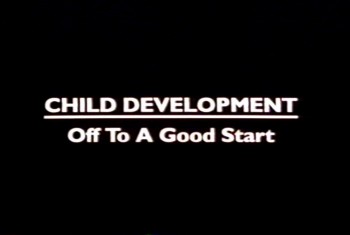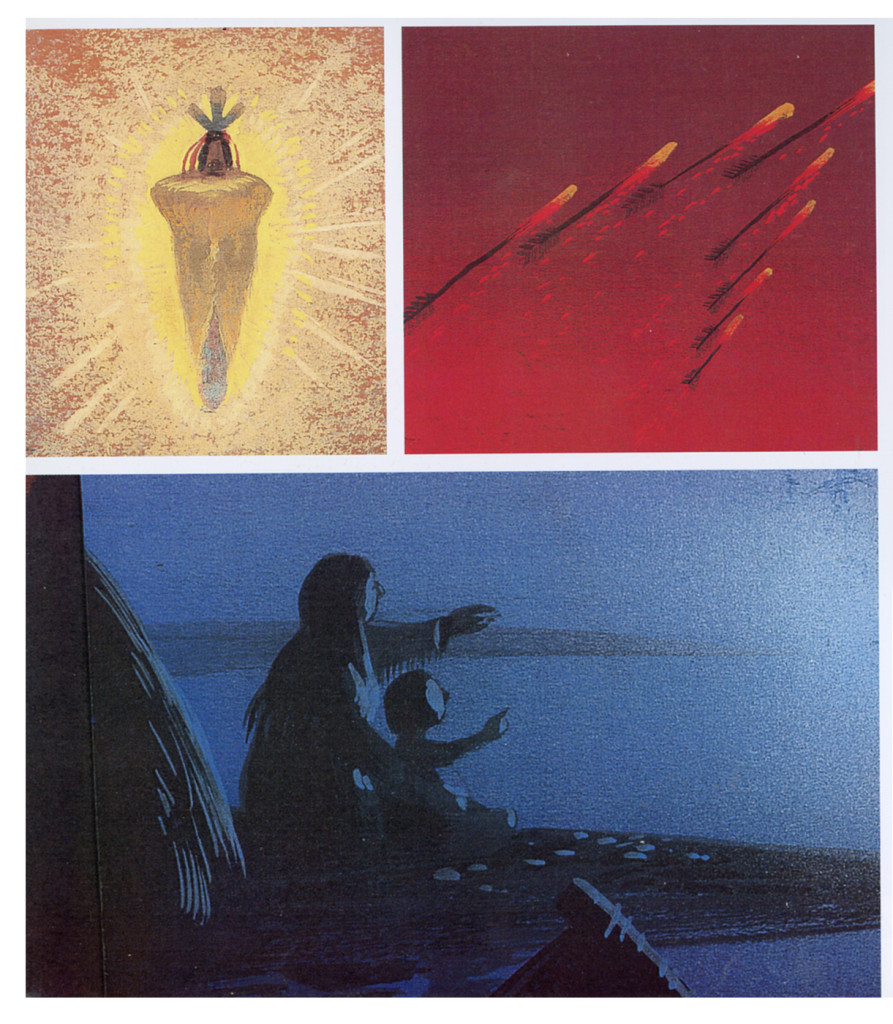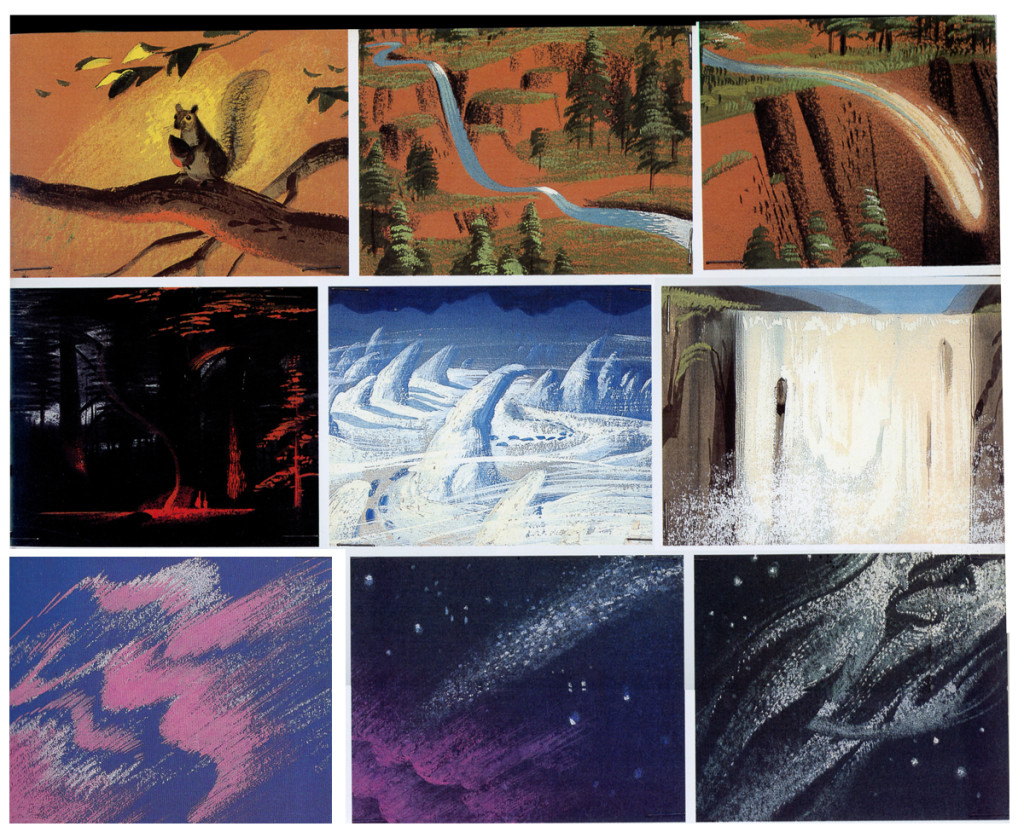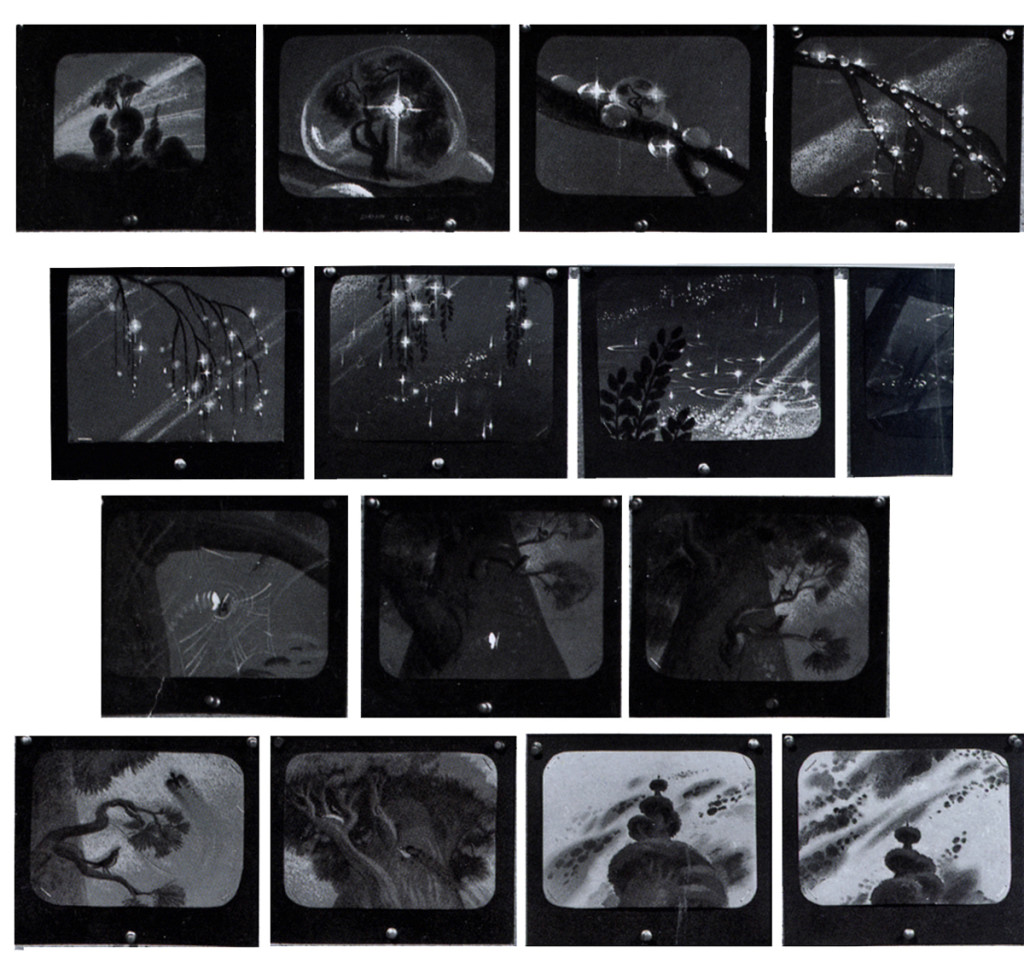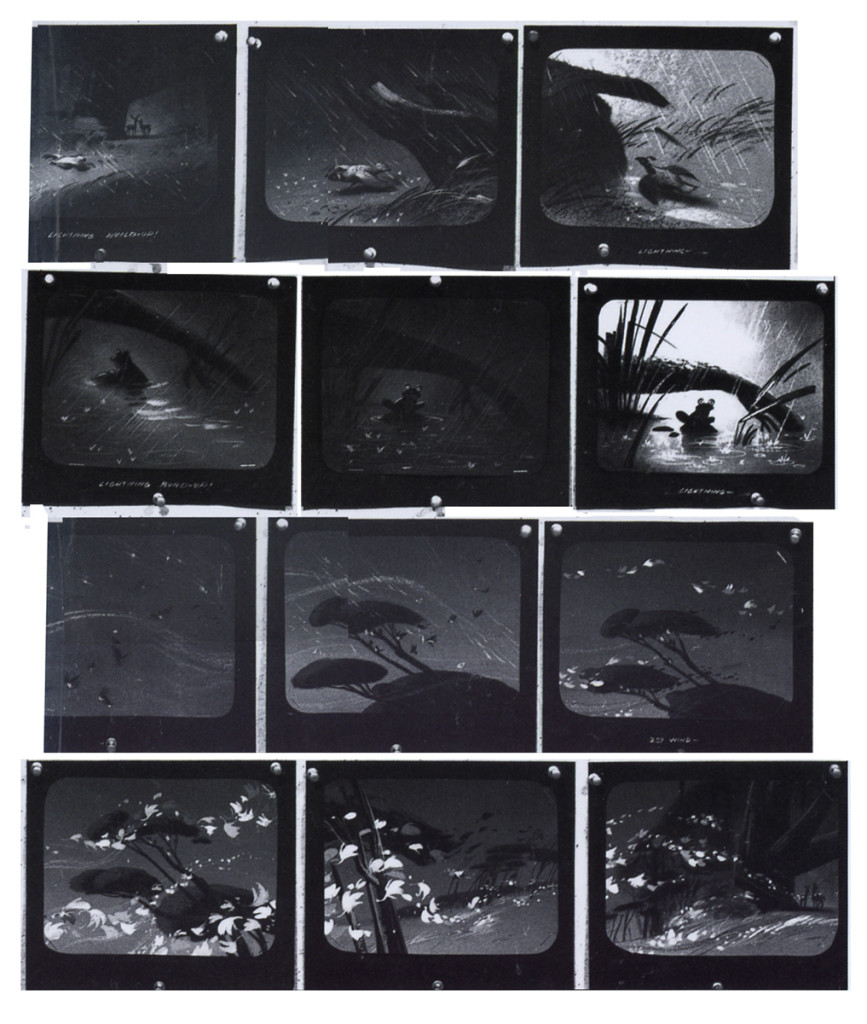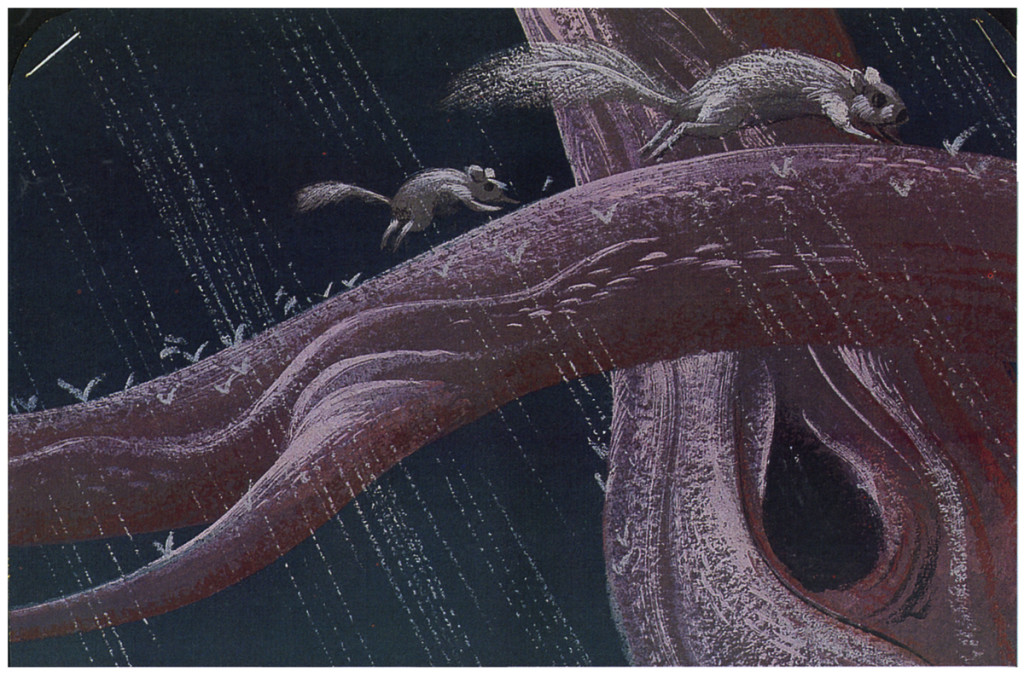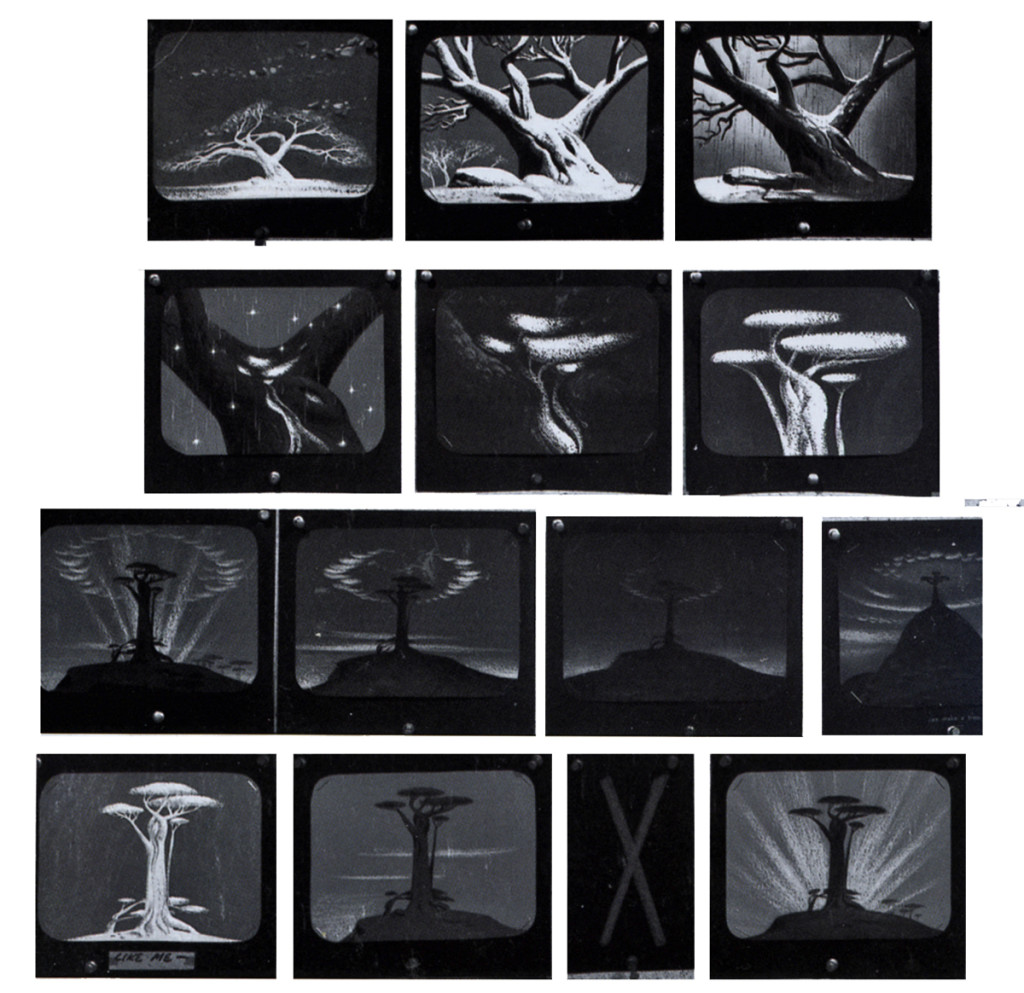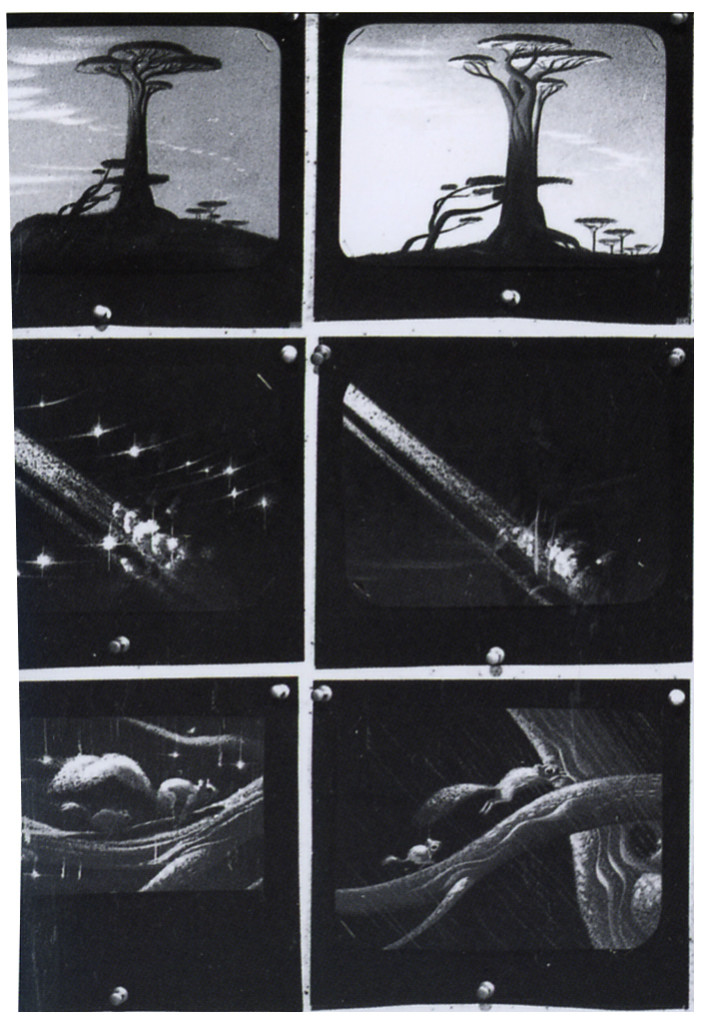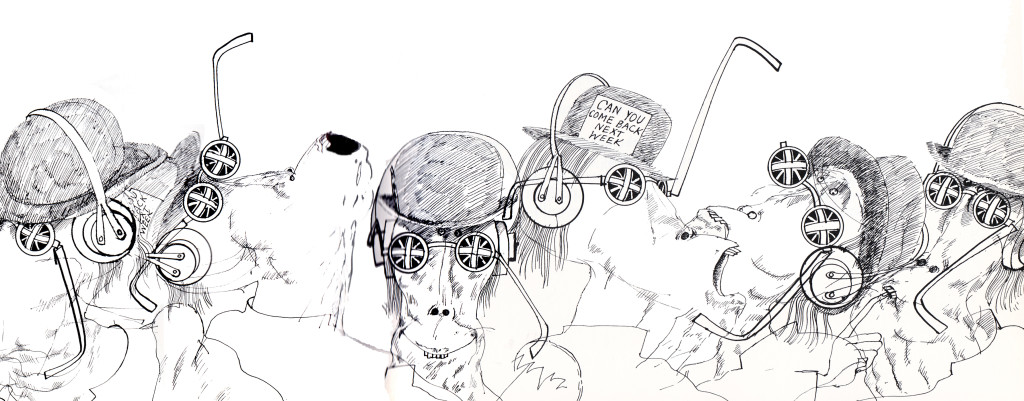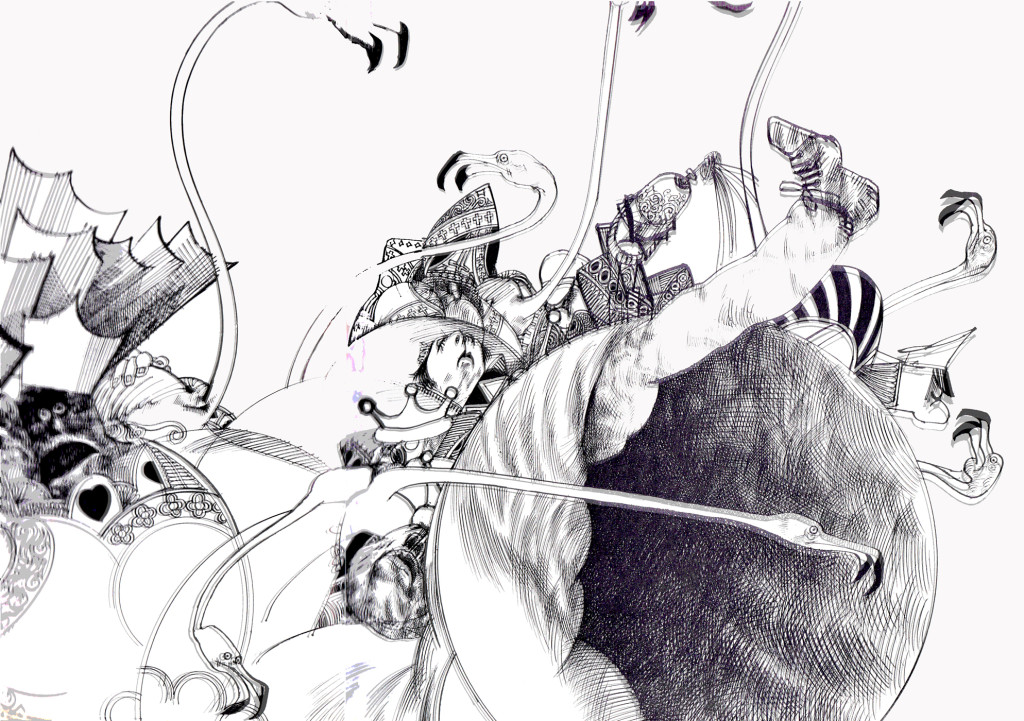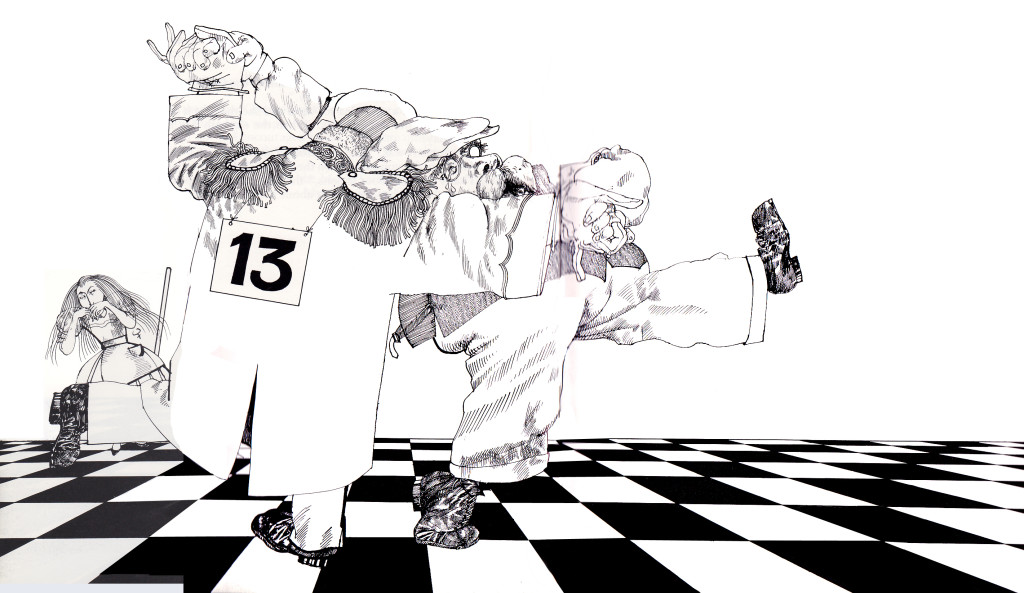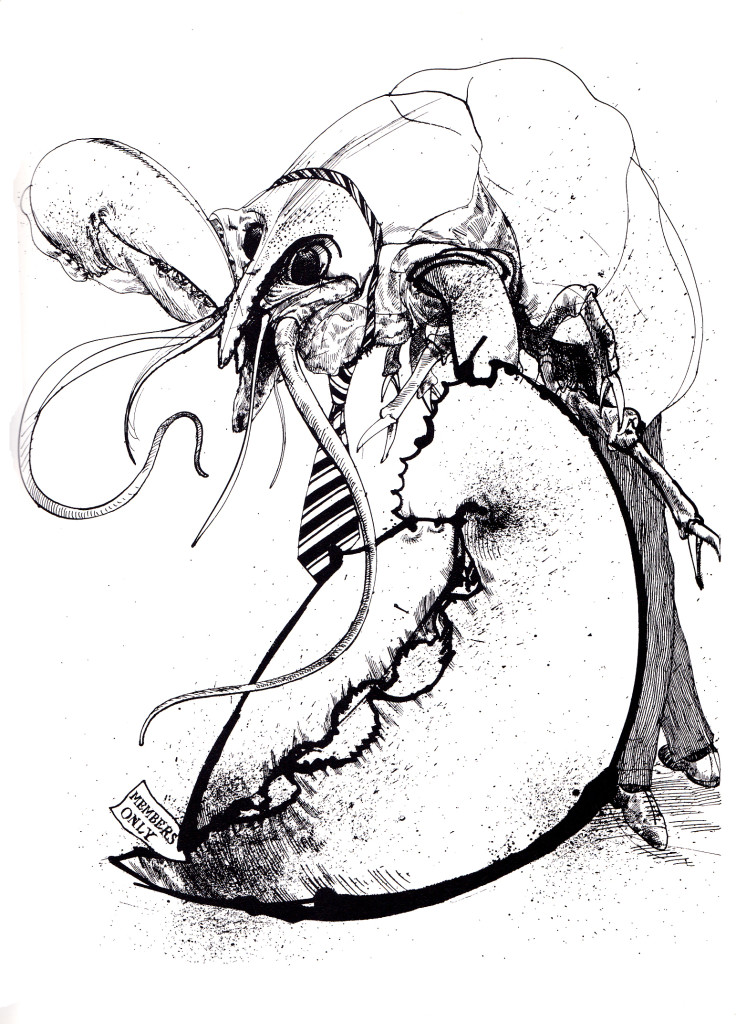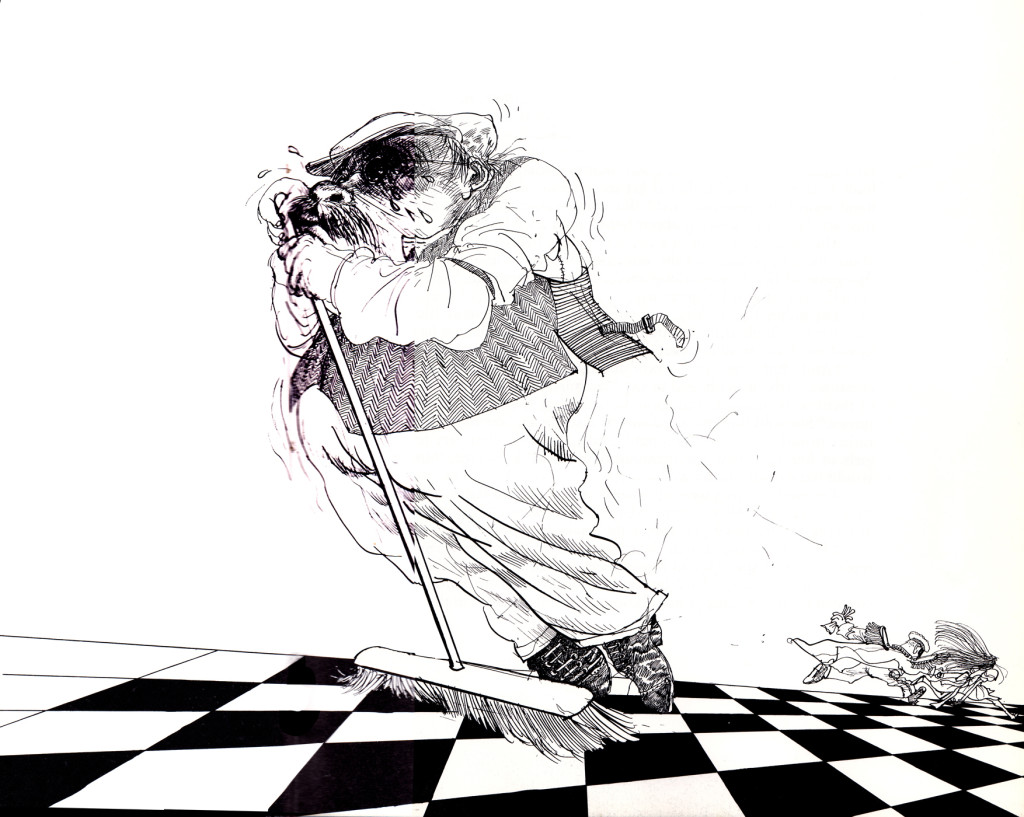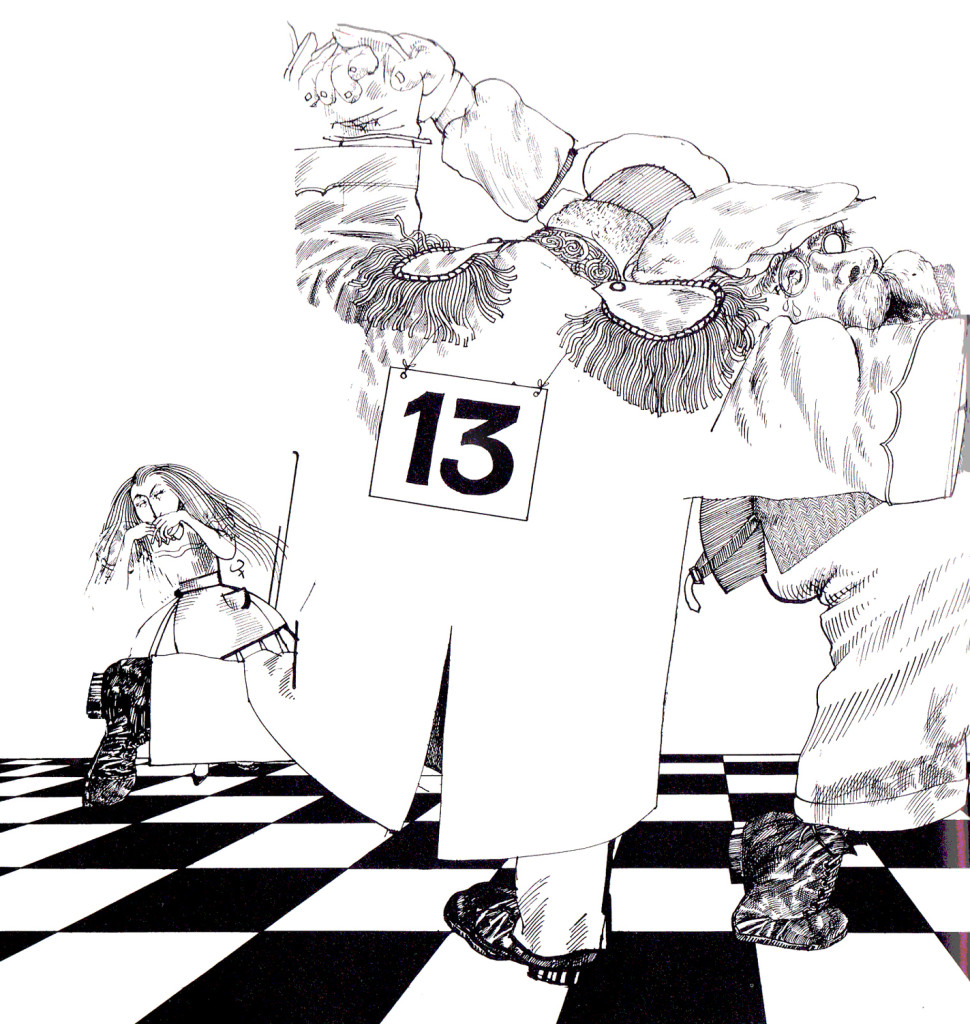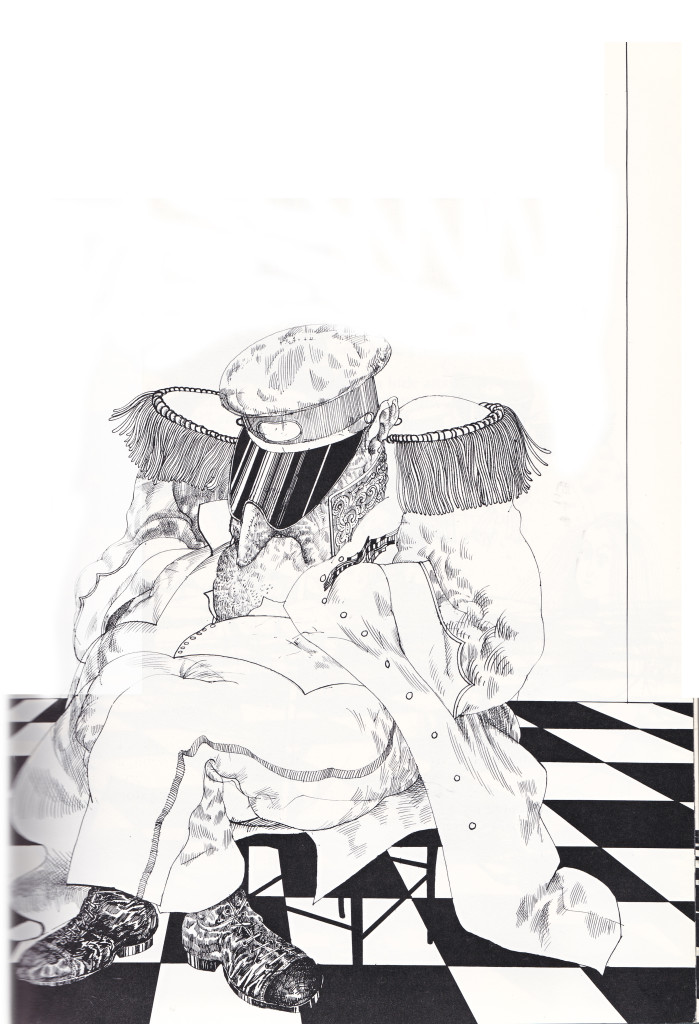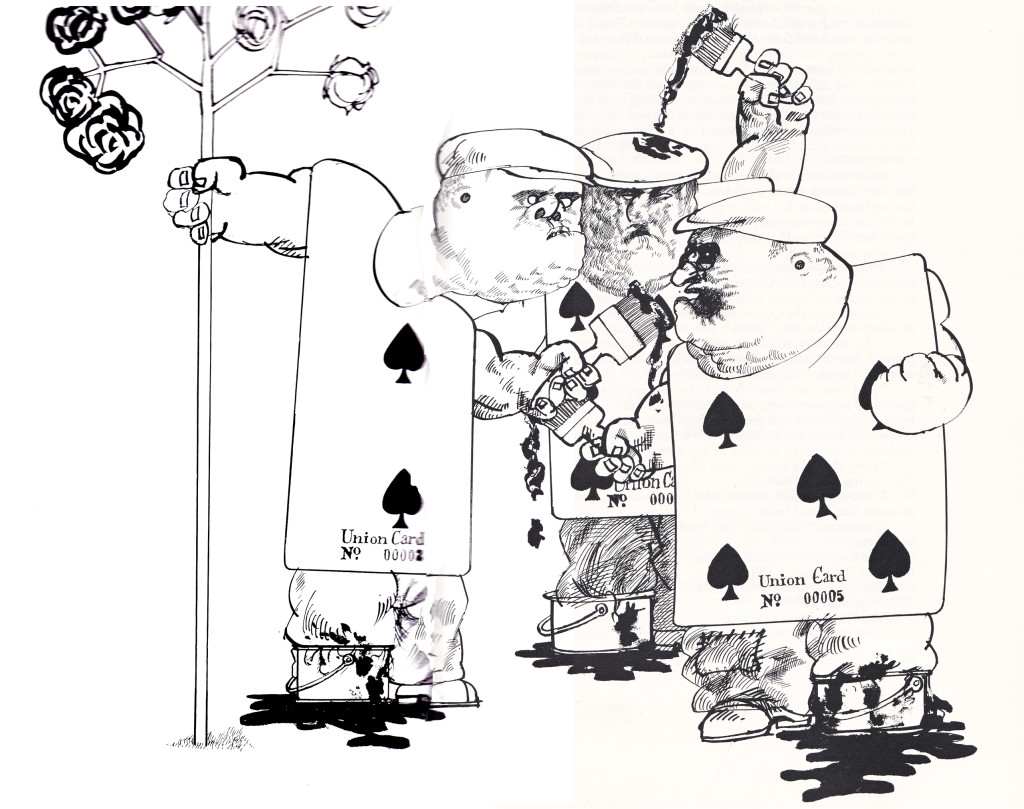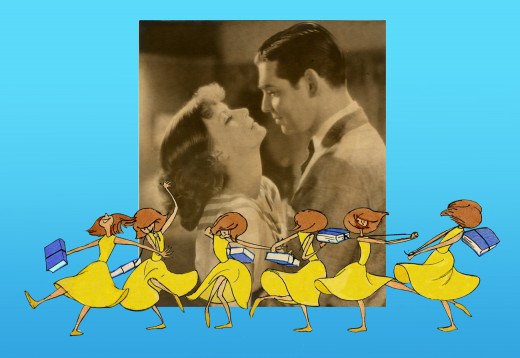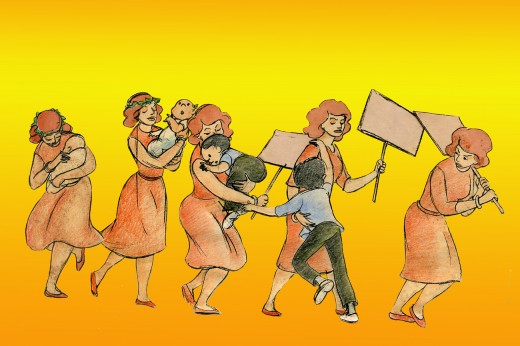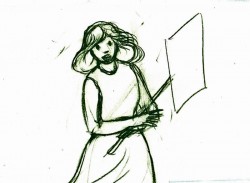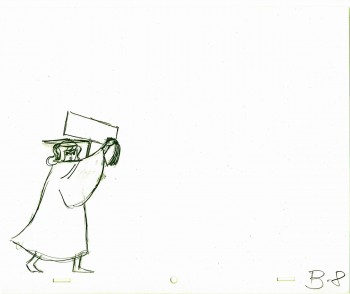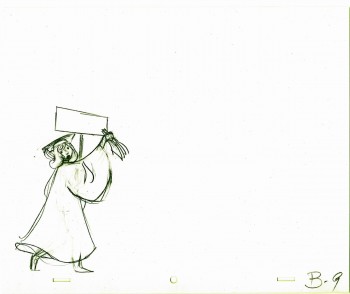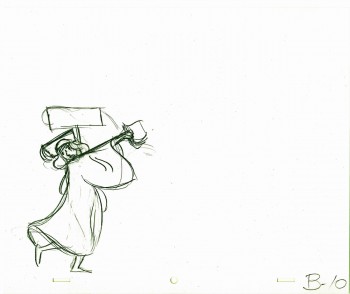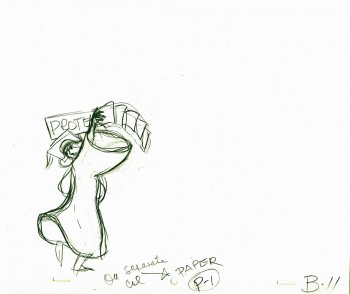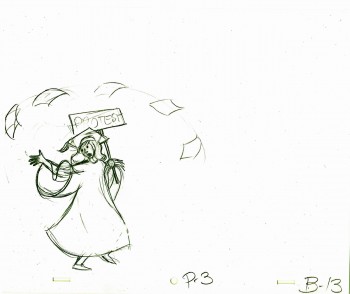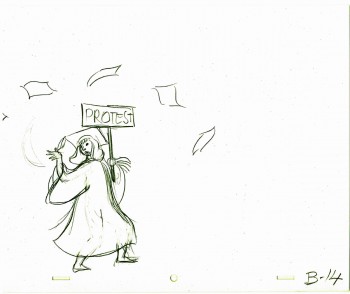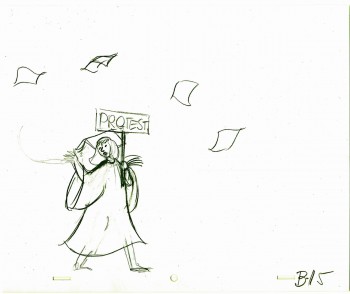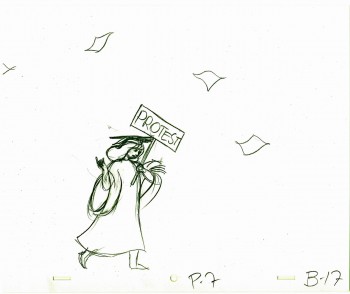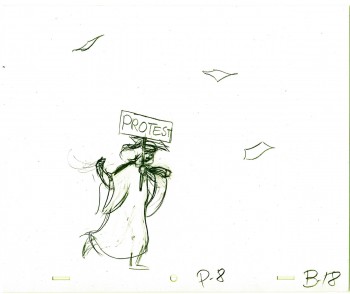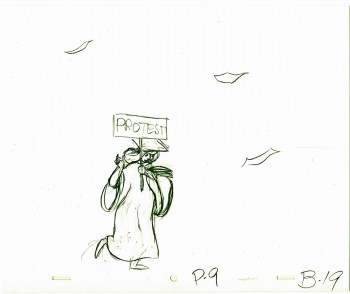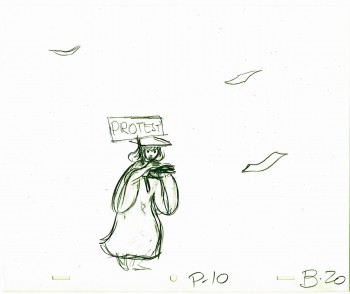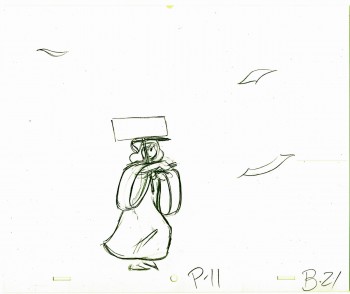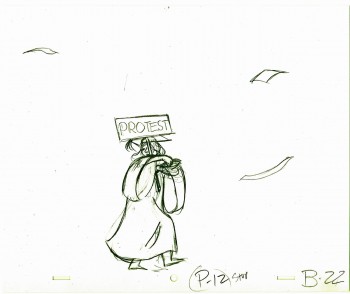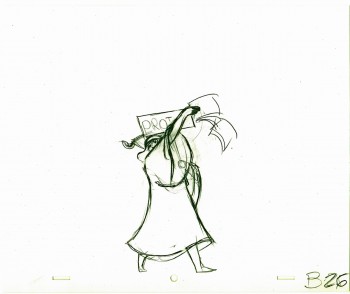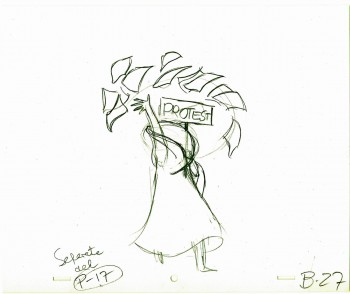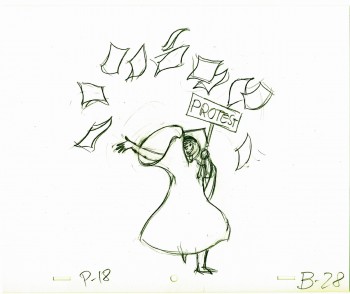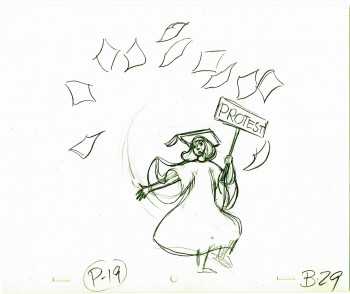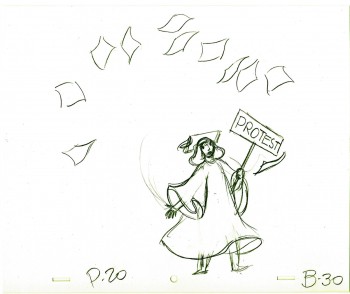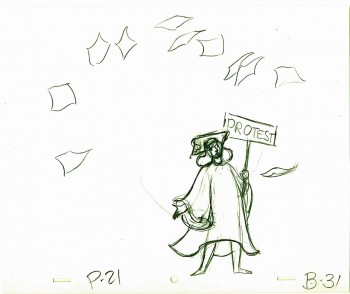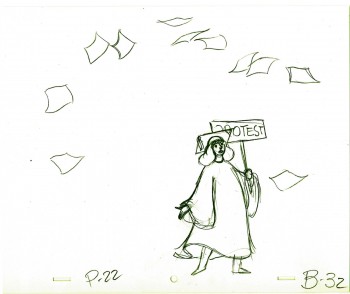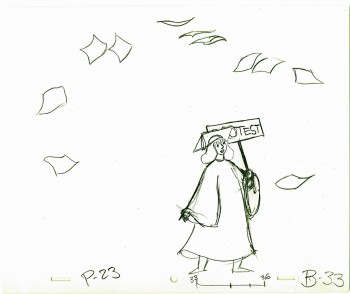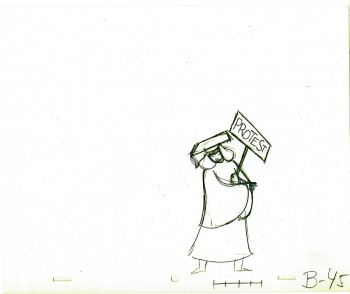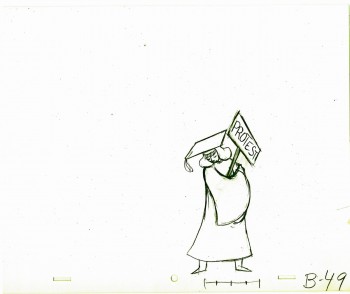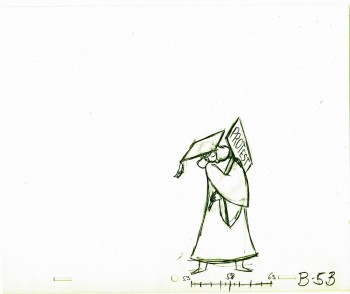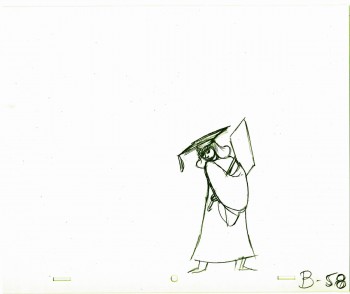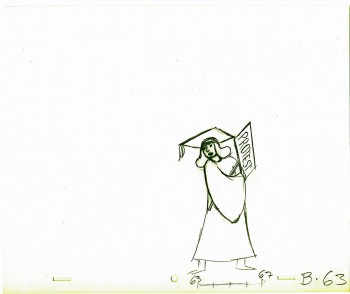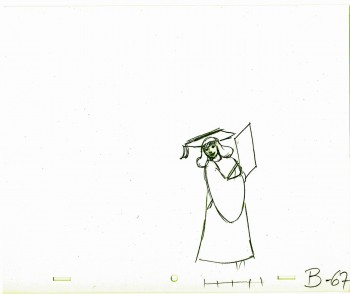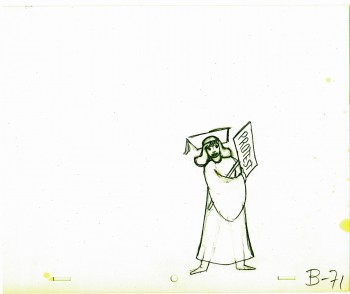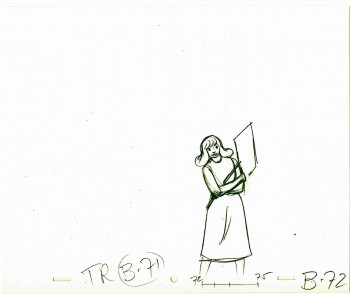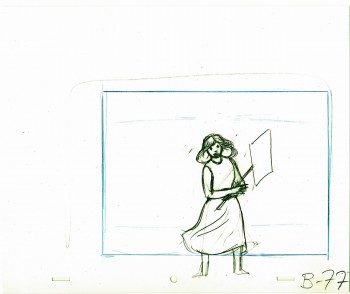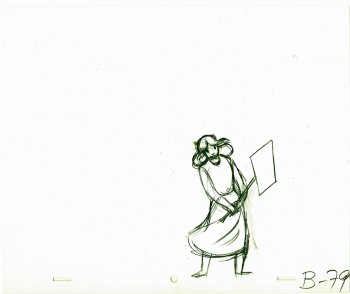Monthly ArchiveAugust 2013
Animation &Animation Artifacts &Commentary &Illustration &Independent Animation 31 Aug 2013 08:27 am
Getting Old
You see the problem is that when you get older, priorities change. Take a look at Mike Barrier‘s blog. He knows what’s important amd surely it’s the ghsts of the past. Yes, we want to know who did what and when and where, and we move heaven and earth to get that part right. For the most part it is.
Then you have to look for and preserve those beautiful drawings of our youth. We get all the help we can, and we get it right. But there’s still so damned much work to do.
I’ve been digging into the archives, and lord knows most people aren’t ready to admit they’ve already viewed these drawings a half dozen times before. It’s not like saving Savannah or moving some extraordinary pictures. So they were moved on, then 0n again, before being devoured,
I love this work; I love animating it even more. When some semblance of life shows up in those drawings.
Getting older means it’s harder to get the point across. The message engines more seriously, and people all about watch for the brim of your head. They want to see you, too, so you’re on display like as not. The cartoon you planned has turned into some kind of “Art” and you try harder.
Then you really get tired. But you go on,god bless you. You try hard.
Commentary &commercial animation &Illustration &Layout & Design 30 Aug 2013 12:49 am
Child Development care – on a tight shoestring
- Let me give some attention to a series of films we did for UNICEF back in the 90′s. There were four films which focussed on Child Development, trying to teach parents in the Third World how to take care of their children in the first eight years of development.
The animation proved crucial, but without a unique artistic style there’d be nothin but cute baby pictures. We were successful (or I wouldn’t be talking about them.)
These films were brought to me by one, Cassie Landers. A well trained educator and an employee of Unicef where she promoted child development training and was hoping to use film to get the message across to the Third World.
Primary to these films was to get the point across that females deserved as much attention, including education, as the boys did. This is a major problem throughout the world, and UNICEF has done an entire series specifically for India about it.
Our aim was to encourage good diet, good behavioral practices and, again, the importance of a good education. The four films were ultimately combined with some live action footage of T. Berry Brazelton talking with children and introducing each of the four segments.
Hillary Rodham Clinton, as First Lady, introduced the entire 1/2 hr. show.
Here are some frame grabs from about 2/3 the scenes of the first film, Off To A Good Start.
 1
1
 2
2
After the UNICEF logo, the film started with a montage of children’s faces.
 3
3
I’ve compiled about a third of the faces.
 4
4
The camera continually moves in on the faces while …
 5
5
… constantly dissolving to the next setup.
 6
6
This was the opening to all four of the films.
 7
7
It was accompanied by narration by Celeste Holme describing the films.
 8
8
The narration was written by UNICEF Producer/educator, Cassie Landers.
Sue Perotto drew all of the children’s faces for the opening.
 10
10
The first film started with prenatal care.
 11
11
Giving a very short the child in the womb.
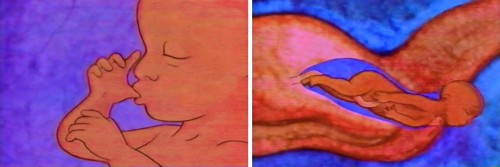 12
12
Right through to the actual birth.
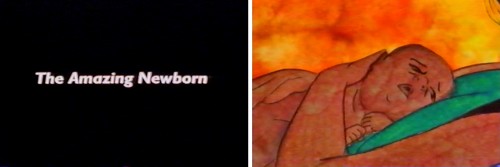 13
13
Then it jumps to the first year of development.
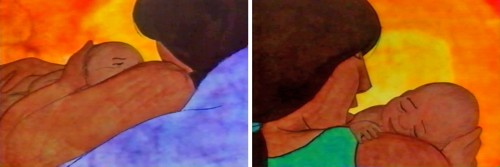 14
14
The art style was designed after Matisse’s Moroccan paintings.
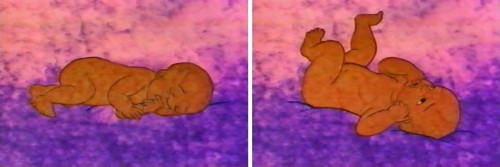 15
15
He had a very primitive set up colors with
earth-toned characters dominating their paintings.
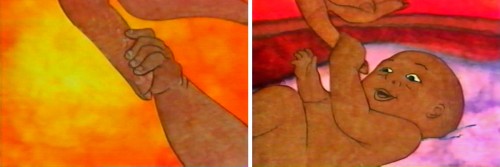 16
16
We tried to reproduce the feel of these paintings
allowing the texture of the paintings to run and bleed.
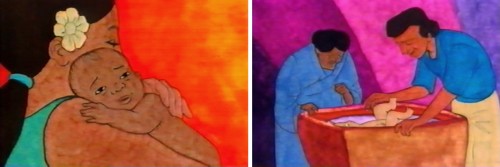 18
18
This was all done pre-computer days, so all art was
painted on paper, then cut out and pasted to cels.
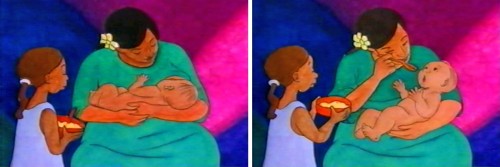 19
19
It was all shot on camera by Gary Becker at his FStop Studios.
 20
20
The first year continues with similar setup.
 21
21
After showing some advanced activity . . .
 22
22
. . . we show how the brain has started to . . .
 23
23
develop enormously in this first year.
 24
24
The child learns to get up and crawl.
 25
25
From here she learns to walk.
 27
27
Then he learns to play more sophisticated games . . .
 28
28
. . .utilizing tools that require more dexterity and thought.
Directed by Michael Sporn
Produced and Written by Cassie Landers EdD, MPH
Narrated by Celeste Holme
Music by David Evans
Production Coordinated by Masako Kanayama
Backgrounds by Jason McDonald
Edited by Ed Askinazi
Photography by FStop Studio – Gary Becker & Bob Bushell
Technical Consultant Marc Borstein Nat’l Inst of Health, Bethesda MD.
Office Manager Marilyn Rosado
Animation by Rodolfo Damaggio, Sue Perotto, Michael Sporn
Rendering by Christine O’Neill, Matt Sheridan, Stephen MacQuignon, Masako Kanayama
Special Thanks to Nigel Fisher, Deputy Regional Director,
UNICEF Regional Office for the Middle East and Africa
Animation &Commentary &Daily post 29 Aug 2013 01:47 am
I can’t tell you how pleased I am to have received the biography of master designer, Maurice Noble by author, Tod Polson. The book has been one I’ve anticipated of for quite some time. I must admit a bit of disappointment in the number of illustrations throughout, but there’s still plenty there to write about, and I will take two posts combined to review this important book.
Late Nite Mystery
While in the hospital a week ago, I didn’t sleep very much. One channel in NYC, CBS, has been replaced by Time Warner and they’re predominantly showing older children’s fare late night. A number of the Pixar features including Cars, A Bug’s Story and a few other unimportant pieces were shown along with several independently produced odd films.
Only one feature really stood out for me. It looked like a Mexican version of Alice in Wonderland almost as though it were drawn by Bunuel and combined with some eccentric live action. It blended very eccentric cg animation with live action, and 2d art that was beautifully drawn and felt purely original. At one point a screen full of characters that looked as though they’d been drawn by the early Picasso, moved across the frame. The black line art was almost blown out by the overexposed whites, and it certainly was purposefully done.
Small groups of simply dressed people move through the screen, and they all looked like poor Mexicans.
I’ve searched to find the title of the movie, but haven’t had any luck. I’m sure it had a French title. If this sounds at all familiar, let me know. I’d like to own a copy and would like to write more coherently about the movie.
Almond Milk
I’ve really taken to a couple of simply drawn animated spots by Blacklist / Studio AKA. The art directors are: Lindsey Butterwick, Danica Conneely, and Michael Fiore. The spot seems to be be cgi trying to cover the look of 2D animation, and they’re very successful, to me. Gently composed commercials that always feel positive and happy.
They also seem to there no matter what channel you turn to.
Animation &Animation Artifacts 28 Aug 2013 06:14 am
Only God Can Make a Tree
Given the holiday celebration of Martin Luther Kings’ elloquent statement re this subject, I’ve opted to post these images from Dick Kelsey. Richard Kelsey was one of those visual poets of the Disney studio. He’d probably have been the only one who could successfully tackle Joyce Kilmer‘s poem, Trees. He also brought Hiawatha to life with his strong beautiful watercolor and in sketches. (Needless to say, the sketches of one film often end up mixed in with the Hiawatha pictures.) Unfortunately, the film never completed production. We ;sten to third rate rate newcsasters give thier own fourth rate unditry of the day. Ricard Kelsey couldn’t offer much better than these images.
Trees was a seqment of the 1948 package film, Melody Time and blended in with a never-completed piece based on Longfellow’s poem. Hiawatha was never complete but was an amazing gift for sore eyes.
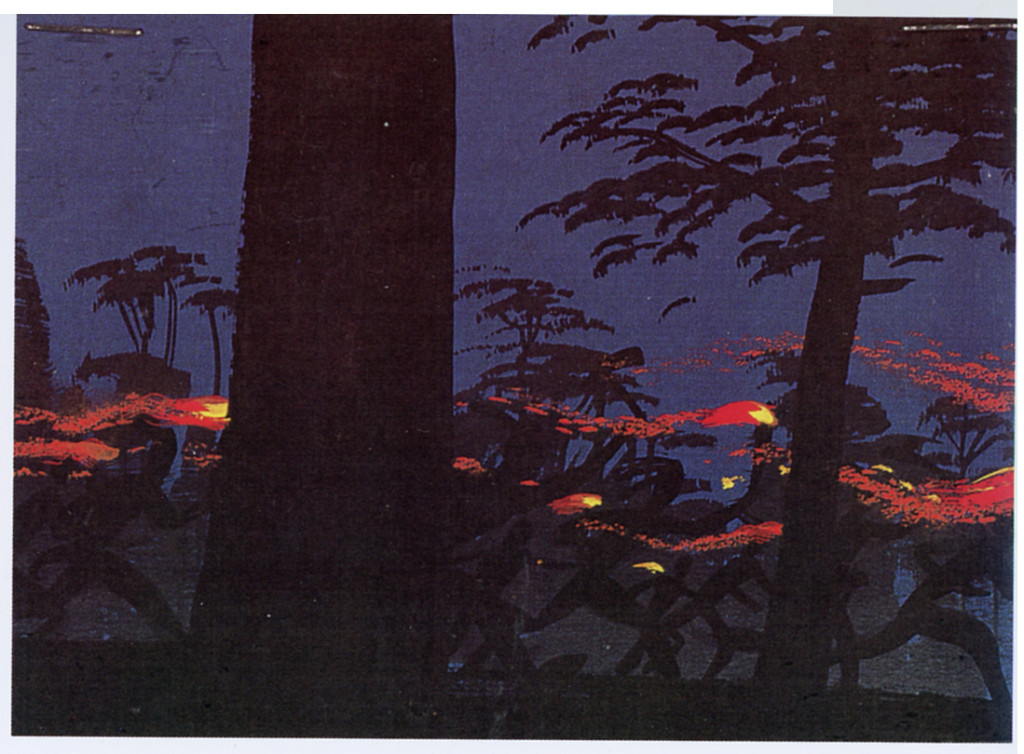
The art in these two pieces is often as touching as Eyvind Earle‘s majestic work for Sleeping Beauty. You can see how some slight grace and a more assured pen would have brought the backgrounds to Pocahontas closer to Sleeping Beauty.
They certainly had artists of character working for Disney back then (as do they do today; it’s just that today everyone seems to smell of fear. You also have to know how to keep the beauty of the art from dissipating after a few shallow and solo comments.
Articles on Animation &Books &Chuck Jones &Illustration 27 Aug 2013 11:11 pm
More Than the Scenery
I am a fan of the work of John Ford. If I’m caught catching a minute of one of his films, you’ll see me stay through to the end. Likewise I have almost as great a respect for the animation design work of Maurice Noble.
It never fails. I get to the point where I’ve just about run out of hope for animation, and I feel like the greatest pessimist in the world. When I say “animation,” I mean 2D. Every frame is controlled by one person. The rest – cgi – is, to me a graphic effect, electronic puppetry. I’m certainly not talking about the overacted cg action you see in most films done today. Most animation to me, these days, is something that’s done in a computer by teams of people, and isn’t wholly designed as “personal.” There are, of course, the exceptions. When something like THE LIFE OF PI shows up, it feels like magic; the magic you expect of great animation.
There’s just too much of everything in most current animation; even the flash Mickey Mouse spots go too fast with their Zips, Pans, Takes; the simplest move seems to go over the edge. Gestures are bigger than they need be, actions are over the top, dialogue is too loud and frenzied unless it wants to be quiet – then, it really is dead. The animator became that big red button they have at “Staples.” You press it and the client can fix what he has to – his way. The poetry has vanished from the art form when this animation begins. Too bad there’s no personality in those big red buttons.
John Ford made some of the most beautiful movies we have on film. Many of these are Westerns, Westerns which notably featured some of the most extraordinary, natural land masses photographed. The incredible buttes and sights appear in the Arizona Desert, called “The Painted Desert”, and whether they were shot in the glorious golds, violets and other colors or even shot in B&W they add extraordinary sights to these films. If they weren’t already there, constructed and painted by some god, Ford would have had to have a mass of people construct these images.
Working to a better advantage is the art director Maurice Noble who created his original version of the “Painted Desert” mostly out of his own imagination. I suspect he and a couple of other artists were all it took to develop these animated scenics: far fewer people and a lot less time.
As I said, Noble’s desert was original, a recreation of the actual “Painted Dessert” but one that developed out of Noble’s imagination. These are almost as beautiful as the real thing, in that “design-y” way Noble’s art had.
So here we have two film plans. Elaborate impersonal scenery that was designed by Mother Nature, vs the personal designs delicately designed by Maurice Noble. Both are very different but have similar effects on the films they inhabited. A personal world Ford shares with us and another that Noble constructs for the backdrops of the Coyote and Road Runner. Both set designs are larger than life and full of that very-same-life. It’s in gloriously wonderful color (even thoughmany of these sets were shot in B&W) it’s just the beginning of the strength of these films. We’ll look further to see what more has been offerred to us in their films.
Daily post &Illustration 27 Aug 2013 07:44 am
Rose Painting
Animation &Animation Artifacts &Commentary &commercial animation &SpornFilms &Tissa David 26 Aug 2013 08:54 am
Garbo Talks through Tissa’s Drawings
To celebrate Tissa David‘s last days, Ive chosen this title sequence she did for Garbo Talks. Her anmation is beautiful for it, and I enjoy looking at the film which has yet to be released on DVD.
The initial rough/cut screening for Garbo Talks was a bit peculiar. I sat down and a woman sat next to me; I sort of recognized her. We said hello when she sat down. Somewhere midway during the film I realized who the woman was – Betty Comden, that half of the Comden & Green writing team. I realized she was playing the part of the older Greta Garbo in the film, without receiving credit. It was brilliant casting, but you could say that about all of Sidney Lumet’s movies.
When I left the screening room there was a tense meeting going on with four people. I caught Sidney’s eye and waved goodbye. Going down in the elevator Burtt Harris, the producer, rushed in as the doors were closing. He asked what I thought of the film. Before I answered he said it wasn’t working, and Elliott Kastner and MGM weren’t very happy. A rough conversation in an elevator.
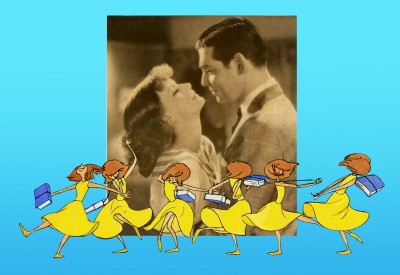
The next day, Sidney asked what I thought of the film, I said that I felt we didn’t know enough of the back story of the Ann Bancroft character in the film. I suggested that I try to offer this in the opening credit sequence. Sidney loved the idea. He just made me promise that it wouldn’t feel like the credits to “I Love Lucy” or “I Dream of Jeannie.”
During the mix, we were talking about the music for Garbo Talks when we slipped off into discussing the music for some of Sidney’s other films. I told him that the music by Richard Rodney Bennet for Murder on the Orient Express was one of the most brilliant film scores ever done. Sidney hesitated in responding finally saying he didn’t get it at first, and it took a while for him to appreciate the music for that film. Sidney wasn’t always perfect in selecting a composer for his films, although I do think that Johnny Mandel was a great choice for him on Deathtrap and The Verdict (or any film, actually).
Bob James had scored Garbo Talks. (He is an eminent jazz pianist, whose most famous piece is probably the theme to the tv show, Taxi.) Bob and I had to work together very closely. He wrote the score to the animatic I’d given him and would build the rest of the film’s score from that. He hit many of the actions in that opening title, and Tissa David‘s animation hit them all. There was a very tight sync between music and title animation.
The preview screening was held on Long Island. I drove there and met the group of Sidney, editors and MGM execs, including Elliott Kastner. He was the leading producer on the film. They weren’t happy at the end of the screening, and I was sure my titles were going to go. It took a week to hear that the titles were staying, but the score by Bob James was dropped. The composer took the hit, unfairly. A new score was being written by Cy Coleman. All that tight sync work!
Coleman wrote a lovely melody for the film, but just swept across the animation not hitting any points in particular. It’s taken me a long time, but I’ve come to like the music he wrote. Tissa wouldn’t watch the piece again with the new music.
In the film, the character played by Ann Bancroft has had a life that, in some small way, was shaped by Greta Garbo’s feature films. This is a small bit of backstory in the live action film, until the end.
For the credits, I chose to develop this aspect of her story, and Sidney agreed on the approach. We told her life in a caricature of Ann Bancroft‘s character, growing up. The sequence ends with her at her current age, an elderly woman, and the live action begins. Hence, we were giving the life story of the film’s lead character before the film started.
The idea was to use the device that had been developed for TV in the 50′s & 60′s of the caricatured characters whisking through the sitcom titles. (See Bewitched or The Carol Burnett Show.) However, it was our intent to treat it in a serious way.
Tissa David did a stunning, tour de force of a brilliant piece of animation. It was a dance that the character went through, and the credits played off the animation, which played off stills of Greta Garbo’s films.
There was a small crew on the piece, which ran about 2 ½ minutes. Tissa animated, I did whatever clean up was left. Robert Marianetti single-handedly colored everything; Janet Benn and Christine O’Neill did additional I&P. Gary Becker filmed it, and Edith Hustead edited.
.
.
Tissa had about two weeks to animate about 2½ mins. of animation. I begged her to leave inbetweens for me, which she did, though only on close positions. I inked on paper, and Robert Marianetti colored directly from these rough-ish drawings. It was done with prismacolor pencils on paper. The paper drawings were then cut out and pasted to cels.
.
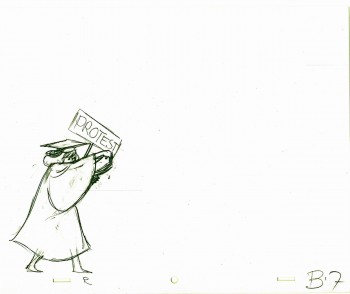 7
7
(Click any image to enlarge.)
Below is a rough PT of the piece with its staccato rhythm since it’s missing inbetweens.
Garbo Talks ruff PT On twos at 24FPS
Click left side of the black bar to play.
Right side to watch single frame.
The entire title sequence.
Thanks to Roger79 for uploading it.
Thanks to Stephen MacQuignon for finding it.
Daily post 25 Aug 2013 04:24 am
Sunday
I was a bit disappointed that there was so little attention given to the obvious success and controversy for Miyazaki’s new film, The Wind Rises. This is so certainly one of the films that the director believed in yet. It also makes it into the NYFilm Festival, yet so little is mentioned of it in the papers. That tied into the controversy the film has created in his own country, and I’m perplexed. It’s a great look at Imperial Japan in the decades leading up to the Second World War through the eyes of airplane designer Jiro Horikoshi. Like Porco Rosso, the film is built around an aviator/aircraft designer and takes us through the history of Japanese aircraft. I can’t wait. The rest of the world seems a bit more patient.
From the trailer it has the look of Poppy Trail, the most recent Ghibli feature that was directed by Goram Myazaki, but almost immedately within that trailer you can see the strength of a several strong climactic scenes. The earthquake alone looks stunning, and the aftermath seems crucial to this new movie.
The Wind Rises
______________________
We know that in 2014 the Walt Disney company will take full charge of Ghbili. This tells us that our favorite neighbor, Totoro will be stalking Mickey and Minnie about Disney World, but we don’t know if it’ll add anything to the film’s viewership. One can only hope so. Apparently animation has been fully in production on some series not yet seen in the US.
The cast is a good one, but the film is an Oprah Winfrey book of the week. I was not around when the Academy screened The Butler, so I missed the post interview with Oprah Winfrey and Forest Whitaker. They both put in good performances, particularly Whitaker, but the film is like knocking on dead wood. It’s a review of the 20th century by Forest Gump. So much is inored and passed over that you think these people couldn’t be apolitical, they had to be brain dead. Only after leaving his job in the WHite House does Whitaker’s character come to life and start realizing how little he’s done in his lifetime. None of the Presidents represented look like the people they’re supposed to be, although Alan Rickman sounds a lot like Reagan.
Maybe it would have helped if the film had a political thought in its head except for obvious ones. Racism bad, VietNam bad. Do we really need a film to tell us this or worse a film about a group of characters that chooses to ignore it all.
The worst part is that there’s a good movie hiding, but these people weren’t able to locate it.
Daily post 24 Aug 2013 08:29 am
The New York Film Festival, this year, will include, for the first time, a Hayayo Miyazaki film from Japan. THE WIND RISES (Kaze Tachinu) is the great Japanese animator Hayao Miyazaki’s new film based on the life of Jiro Hirokoshi, the man who designed the Zero fighter. An elliptical historical narrative, THE WIND RISES is also a visionary cinematic poem about the fragility of humanity.
The following piece was lifted from The LA Times about the controversy this film is stirring in its homelands:
- The movie’s subject dovetails with an issue currently under heated debate in Japan: the new prime minister’s plan to amend the country’s constitution to allow for the building of a full-fledged military, boosting the limited self-defense forces put in place after the war.
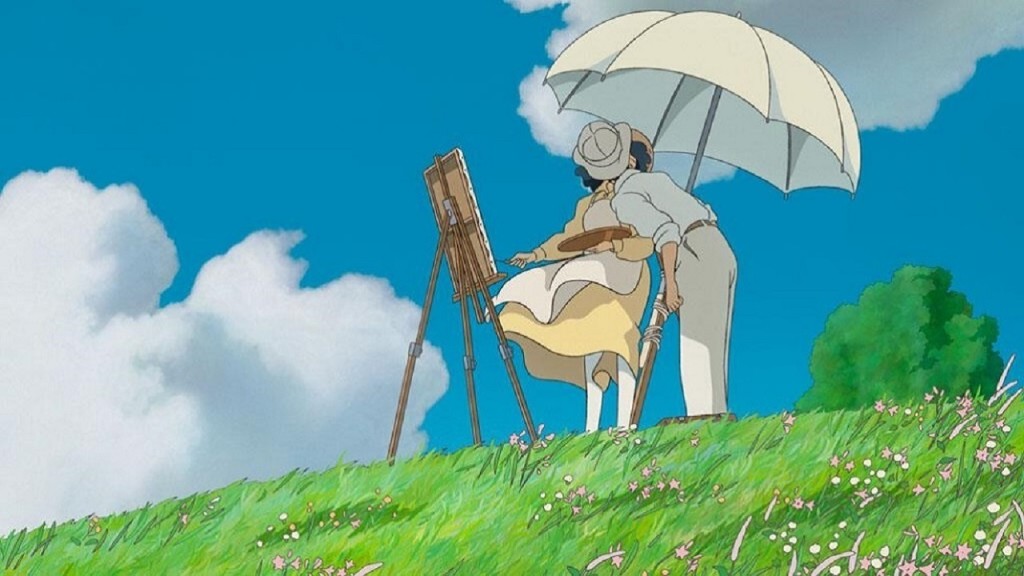 Miyazaki, a venerated cultural figure in Japan, published an essay last month objecting to Prime Minister Shinzo Abe’s plan, in the process raising the ire of some Japanese conservatives, who on Internet message boards labeled him “anti-Japanese” and a “traitor.”
Miyazaki, a venerated cultural figure in Japan, published an essay last month objecting to Prime Minister Shinzo Abe’s plan, in the process raising the ire of some Japanese conservatives, who on Internet message boards labeled him “anti-Japanese” and a “traitor.”
Miyazaki’s movie, which is seeking U.S. distribution, reflects his pacifist stance. In the subtitled trailer above, he depicts Japan in the years leading up to WWII, when it faced some of the same problems that have plagued the country in recent years, including a devastating earthquake and economic stagnation. The character of Horikoshi appears as a contemplative young man, tossing paper airplanes with a girl, gazing at the Japanese countryside from the window of a steam train and working in a factory, until the war hits and the tone shifts, with a plane breaking up in the sky and blood falling to the ground.
Miyazaki has some shared history with Horikoshi. During the war, his father’s company made rudders for the designer’s Zero planes. He also has another connection to the war: when Miyazaki was a child, his father ran a club that served occupying American soldiers.
In 2011, Miyazaki told Japan’s Cut magazine that he was inspired to make “The Wind Rises” by a quote he read of Horikoshi’s: “All I wanted to do was to make something beautiful.”
The controversy over the film hasn’t hurt its box office prospects in Japan. “The Wind Rises” has been the No. 1 film since it opened four weeks ago, and has so far grossed $57 million there.
Animation &Animation Artifacts &Chuck Jones 24 Aug 2013 05:05 am
Heromakers
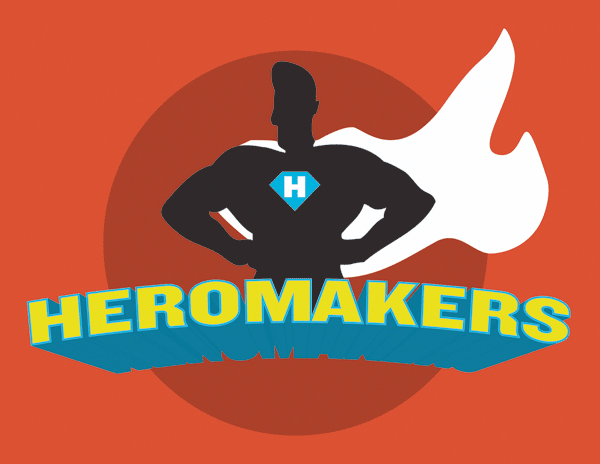
Heromakers Featurette Released
__________________________
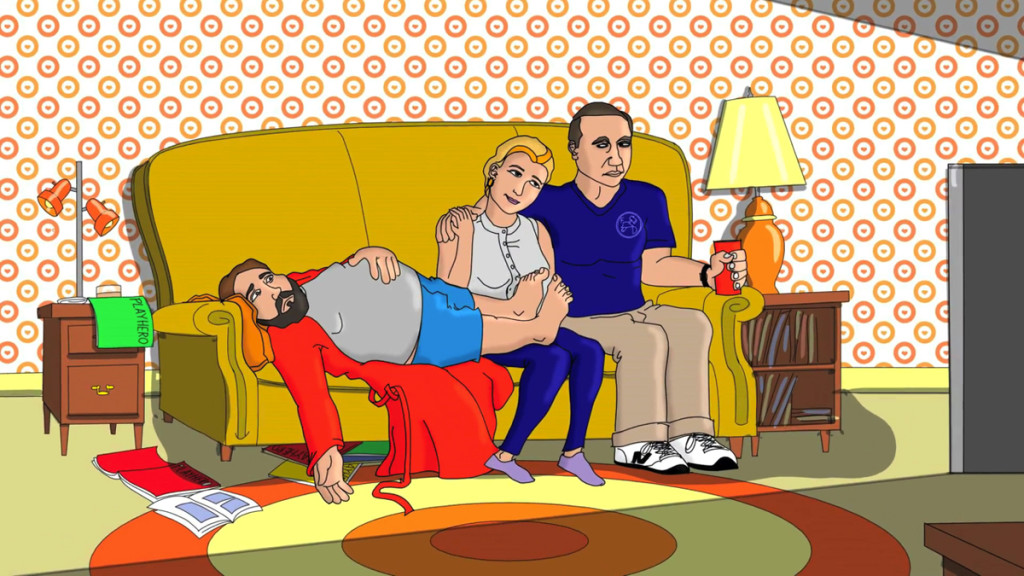 With the help of the Buzzco Associates animation team, Dan Hirshon and Jay Nog, have produced a featurette to help promote their animated sitcom, Heromakers.
With the help of the Buzzco Associates animation team, Dan Hirshon and Jay Nog, have produced a featurette to help promote their animated sitcom, Heromakers. 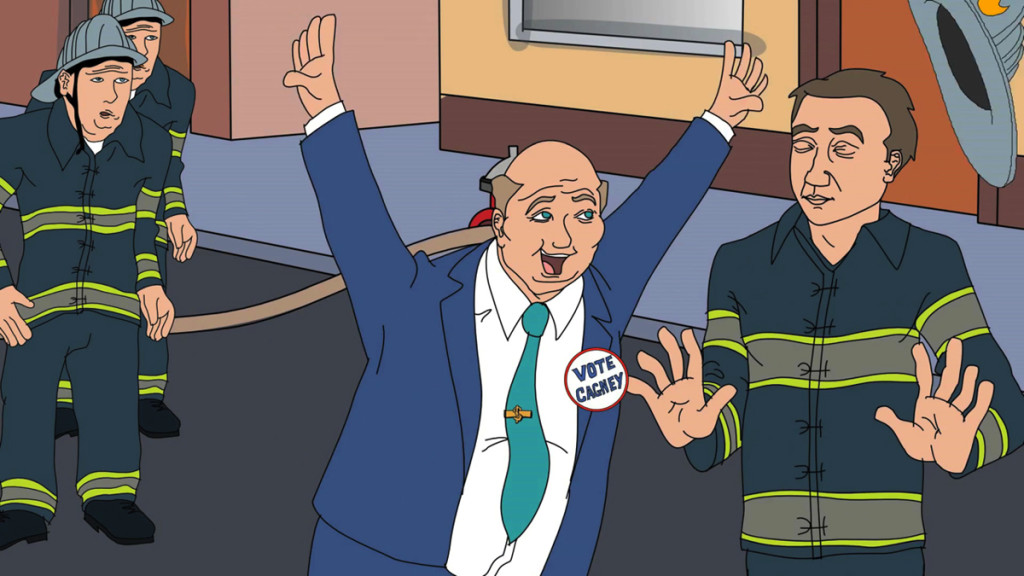
The “Simpsons meets X-Men” comedy series revolves around the dysfunctional Murray Family and
their business that offers human clients the opportunity to experience the life of a superhero.
Hirshon and Nog, both veterans in standup and sketch comedy, decided to take a sketch idea from their group, Grandma’s Favorite, and transform it into a television series. One year and many drafts later they were ready for production. They had no problem securing a talented voice-over cast, character illustrator, and sound designer/re-recording mixer, but finding the right animation team was a much more involved process. “We weren’t just looking for skilled animators. We wanted someone who was also enthusiastic about the project and related to our sense of humor,” says Nog. 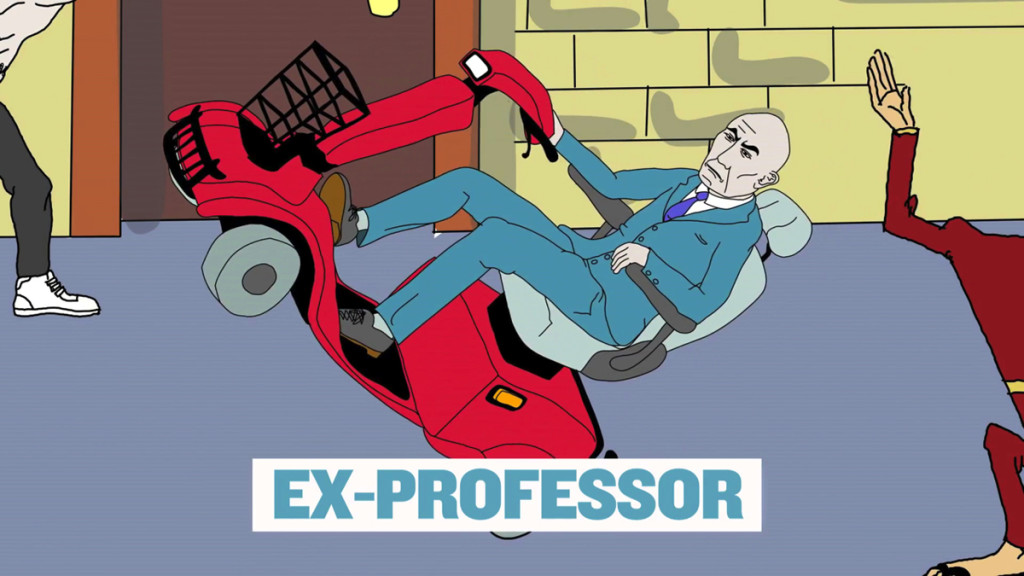
After several weeks of searching they found what they wanted in Candy Kugel, Rick Broas, and Marilyn Kraemer at Buzzco Associates, Inc. “From the first frame of the first animatic we knew we were in good hands. Everything we’d imagined and more was coming to life,” says Hirshon, “and it didn’t hurt that Candy baked us some pretty sweet brownies.” Heromakers takes place in Champion City, where Mayor Cagney’s environmental negligence has led to mutation in some citizens. To avoid public outcry, Cagney dubs the mutants “superheroes” and goes so far as to replace the fire department, with what he labels “The Super Hero Intelligence Team” (THE S.H.I.T.).
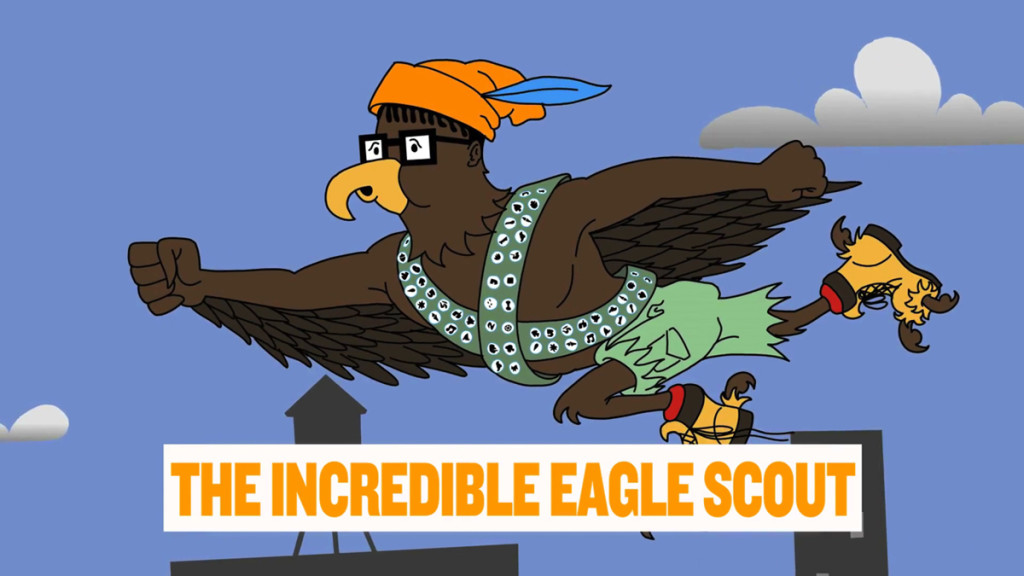
Newly unemployed firefighter, Larry Murray, and his family, decide to bring heroic values back to Champion City with their not infallible business, Heromakers. Larry supervises the client “heroes.”
His wife, Denise, acts as head of promotions. Uncle Bill designs the costumes. And their son, Tim, designs everything from rocket packs to body armor to assist in their clients’ missions.
However, what no one realizes is that Tim is powering the inventions via his secret telekinetic powers. If Larry finds out that his son is a mutant, the business may be doomed.
There’s an extended clip giving more about the Heromakers’ story, characters, cast, and crew at www.Heromakers.net.
